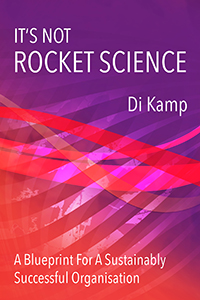There are times when I wonder if I am right off-track in terms of what I believe people want from a leader. Am I being too idealistic in thinking that people would prefer a leader with integrity, intelligence, a long-term view, a clear direction and a desire to make the world a better place?
After much soul-searching, I came to the sad conclusion that, although this may be what we would prefer, it is not what we think we can have. We no longer believe in it as a real possibility. We don’t tend to look for someone who will take us to a better place, but rather look for someone who will keep what we have under some sort of control.
In business the same tendency is reflected in the fact that we talk about leaders, but the majority are not leaders, they are managers – people who work at keeping what there is under some sort of control. Rather than have a vision of what may be possible, most so-called leaders are working to a short-term timescale, managing the resources they have to achieve short-term aims. These people may well do a good job, but they are not leading. The very word implies a movement forward with purpose.
If these people succeed in maintaining the jobs in their area, and keep the business profitable, they are deemed to have done a good job – and they have. What they haven’t done is lead their staff.
And it is a clear direction with a purpose that inspires people to give of their best, rather than do enough to keep the story going.
So are you a good leader? Do you have a vision of how the workplace could be better, how the work your area does could be enhanced, how the service you give could be even better? Do the people around you want to give of their best, come to you with ideas to take your vision forward?
The shift of the atmosphere in the workplace from maintaining the status to moving forward is tangible and fruitful for all concerned. We may not believe that we are likely to have a leader who inspires us to give of our best, but we still delight in it when we do come across one who is like that.
So check yourself out over the next month or so. Ask yourself some simple questions:
- Do I have a vision for my area that would move us forward and that inspires me with a sense of purpose?
- Have I articulated it to my staff, and if not, how could I?
- How can we start moving towards that vision?
- How do I encourage my staff and inspire them to want to give of their best?
And choose to be the good leader you would prefer to be.



